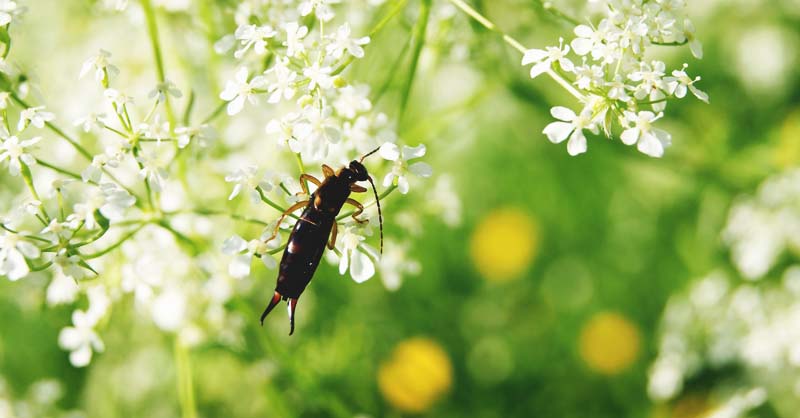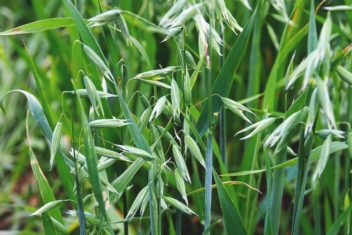Have you ever heard the term ‘pincher bug?’
This is a garden bug which is also known as an ‘earwig’ or ‘Dermaptera’ which can sometimes be considered a help to your garden and at other times be a nuisance.
Earwigs are one of the creatures which live in your garden and depending upon the time of the year and how many of them have moved in, you’ll either be glad to see or feel as though you’re at war.
I’m going to walk you through every aspect of earwigs. How you can recognize an earwig, how to know if they’re in your garden by looking at the damage, how to prevent earwigs, how to stop them, but also how they can be a helper in your garden.
Here’s what you must know to decide if earwigs are a friend or foe:
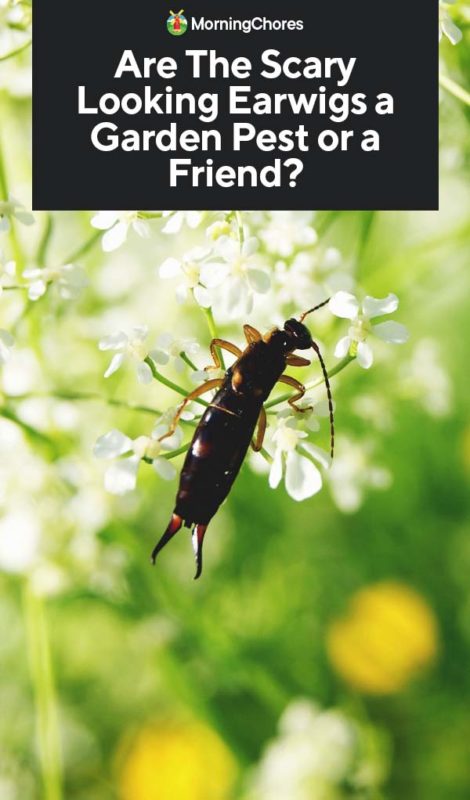
How to Recognize an Earwig
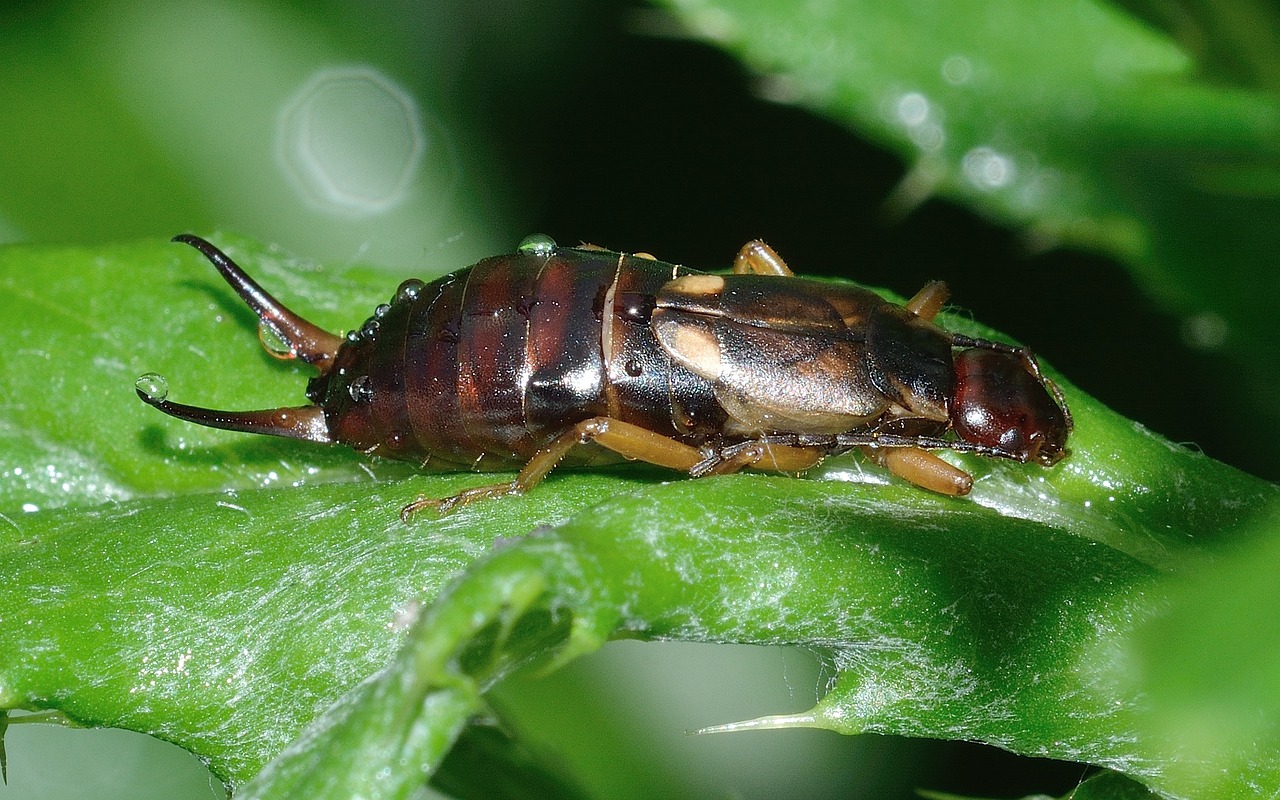
Earwigs have a scary appearance. They’re frequently referred to as pincher bugs because they have a large set of pinchers on the front of their body.
The pinchers are their method of defense against birds and predators which seek to feast on them. They also use these pinchers to catch their prey.
However, they aren’t powerful enough to cause any harm to humans. Their pinchers are attached to their torso and protrude towards the front of their body.
Earwigs are approximately one inch long and burgundy in color. You will also notice their tails because they resemble a claw.
They have two pair of wings though earwigs rarely ever fly. Their pinchers are what they use to pull their wings away from their body if they do use them.
Are Earwigs in My Garden?
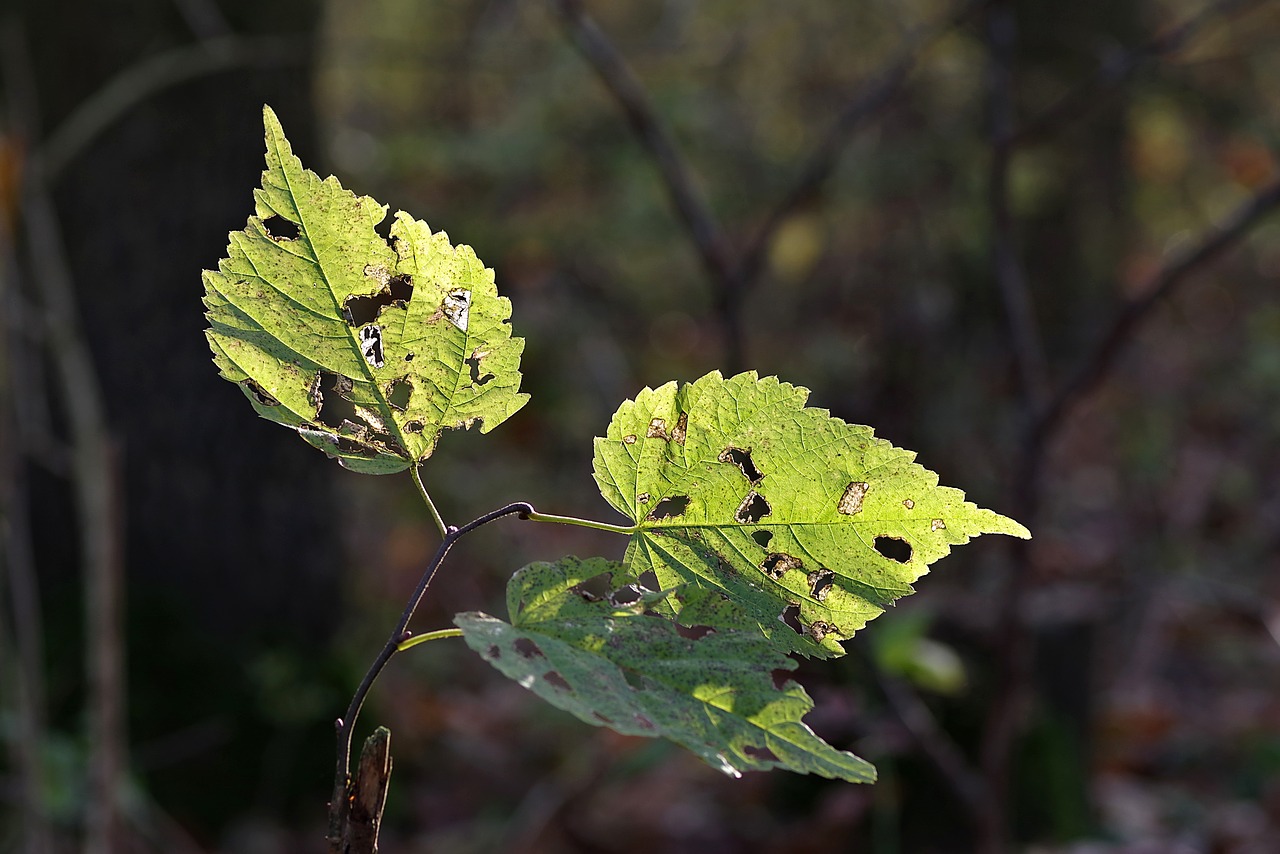
You may not ever see an earwig in your garden, but you’ll know whether they’re there or not by the proof left behind.
Earwigs are nocturnal bugs, and they reside in every planting zone. They are exceptionally prominent in southern climates because it’s warm and damp (which is their preference.)
These pests are also fast movers which makes it hard to keep up with them, even if you do spot one during daylight hours. They live underground by the thousands.
One female can lay between 40-50 eggs at a time, and the eggs only take a week to hatch. The babies are called nymphs and look like miniature versions of their parents.
As you can tell, between their nocturnal habits and their ability to reproduce quickly, it makes it nearly impossible to stop an infestation during the early onset.
The main way to realize if earwigs are in your garden is by looking for damage to your plants. They eat almost any type of plant, but their personal favorites are:
The leaves will have holes in them and develop rough edges overnight. It’s common to see the damage right after it rains because earwigs will seek shelter on your plants.
When you investigate the damage of your plants, be sure to check if there are black droppings on the leaves.
This is excrement left by the earwigs, and you’ll know it’s them between the markings on the plant and the waste left behind.
How to Stop an Earwig Invasion
When you have an earwig problem, there are a few steps you can take to eliminate them from your garden:
1. Remove Anything Wet and Decaying
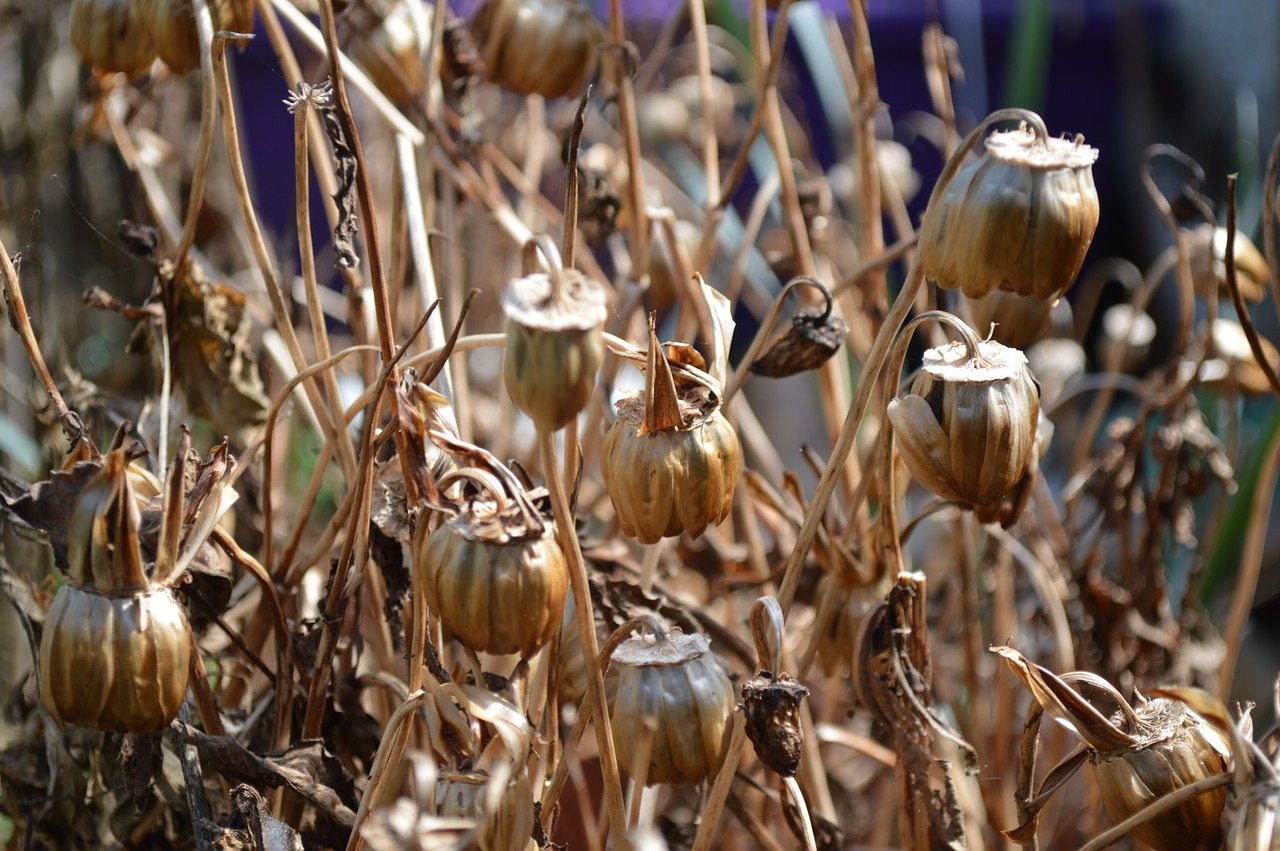
Earwigs prefer wet, dark spots and love to hang around plants and wood which are decaying too. Therefore, go through your garden and remove anything which is decaying.
If you have plants which have been attacked by disease or pests, don’t allow them to sit around. Remove them from your garden, but don’t compost them.
You don’t want to add the pest or disease to the compost you’ll spread over your garden the next season.
2. Set a Trap
There are a variety of traps you can use to catch earwigs. One trap you can use is a water hose. Place the hose in one-foot sections between each row in your beds.
The earwigs will crawl in the hose, and the next morning you can empty the earwigs into soapy water.
Earwigs are attracted to fruit trees too. If you see them in mass amounts on your fruit trees, try attaching a rolled up piece of corrugated cardboard to the tree.
You can also place a plastic straw inside a plastic pipe and attach it to the tree. Either way, the earwigs will draw to the trap and get stuck.
Dump the trap each day until no more earwigs are found inside of it.
3. Borax and Wood
Earwigs are naturally drawn to wood piles because as wood gets wet, it decays; it’s cooler at the bottom of the wood pile next to the damp earth, and it’s dark.
If you have a wood pile near your garden or if you’re concerned about bringing earwigs into your home when you bring in firewood, you should treat your wood pile for earwigs.
The way to do this is to sprinkle borax on your wood pile. This will kill the earwigs. Be sure to watch your pets and small children around the woodpile when borax is applied.
You don’t want them to accidentally ingest it.
4. An Underground Trap
If you’d like to catch the earwigs underground, you can set a trap this way too.
Use equal parts soy sauce and oil. Place the liquid mixture into a plastic container with a lid. Poke holes in the lid large enough for the earwigs to get inside.
The soy sauce will draw the earwigs to the trap while the oil will stop them from being able to crawl back out.
Place the trap in the ground and check it each day. Empty it every morning into soapy water and reapply the trap until you’ve caught as many earwigs as possible.
5. Give Your Plants a Rub Down and a Spritz
Protecting the plants in your garden from earwigs requires two simple steps. Begin by applying petroleum jelly to the stems of each plant.
The earwigs won’t cross the jelly. Once you’ve applied this to the stems, give your garden a quick spritz of a rubbing alcohol and water mixture.
Use equal parts rubbing alcohol and water to create the mixture. Alcohol destroys the outside coating on an earwig.
6. Commercial Products
Alternatively, there are commercial pest control options available such as granules which you can spread around, pellets, or garden dust which you can sprinkle directly on plants.
Earwig Prevention
Preventing earwigs can be difficult because they live in every area. However, you can deter the pests by inviting their predators to your garden.
Create a yard welcoming to both toads and birds. They can help you to balance out the earwig population on your property in a natural way.
You can also deter earwigs from taking over your plants by not planting crops (especially the crops they love) near areas you know the earwigs will live.
For instance, don’t put your garden or orchard near your shrubs or an area where ivy is prominent. Earwigs will navigate to these areas naturally, and they’ll move in on your crops if they’re closeby.
How Earwigs Can Benefit Your Garden
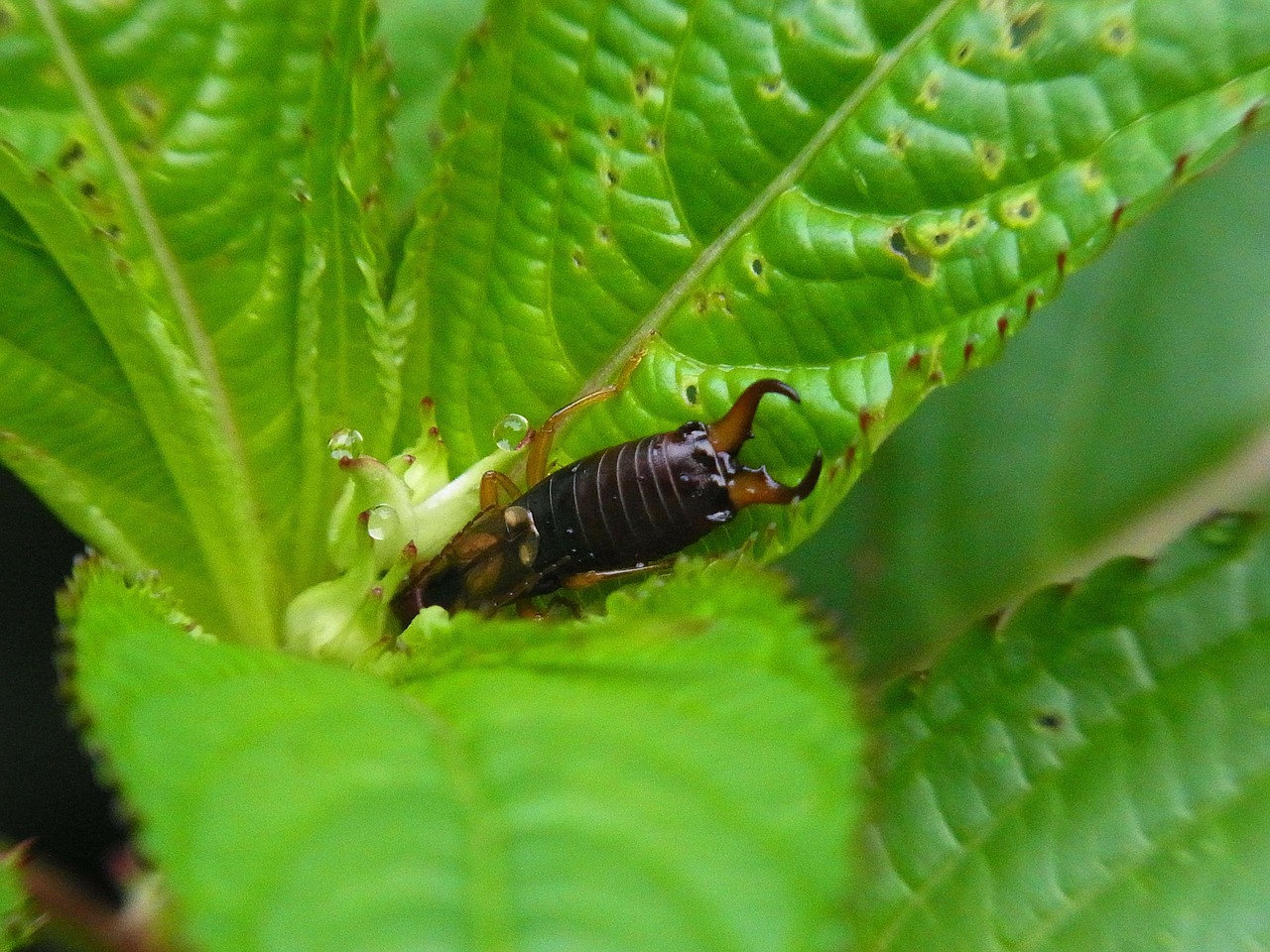
This last note is one for you to reflect on and each person may feel differently. Earwigs can be a help around your garden as much as they can be a nuisance.
They help control your aphid population because they eat them. During wet seasons you may have abnormally high numbers of earwigs in your garden where you have no choice but to fight back.
Yet, if you don’t see extreme damage in your garden caused by earwigs, you may choose to allow them to have the few plants they’re snacking on if they’re keeping your garden safe from aphids.
You might even consider planting a few extra lettuce plants or celery plants specifically for the earwigs to feast on.
This would allow you the same quantity of harvest as you were initially expecting and have a natural defense against aphids in your garden which lessens your workload.
It may not be a viable solution for everyone, but it’s certainly food for thought.
You now have an understanding of what an earwig looks like, how they can benefit your garden, how they can damage your garden, and how you can battle them if they are overpopulated.
Hopefully, this will equip you to protect your garden better and enjoy a greater harvest!
